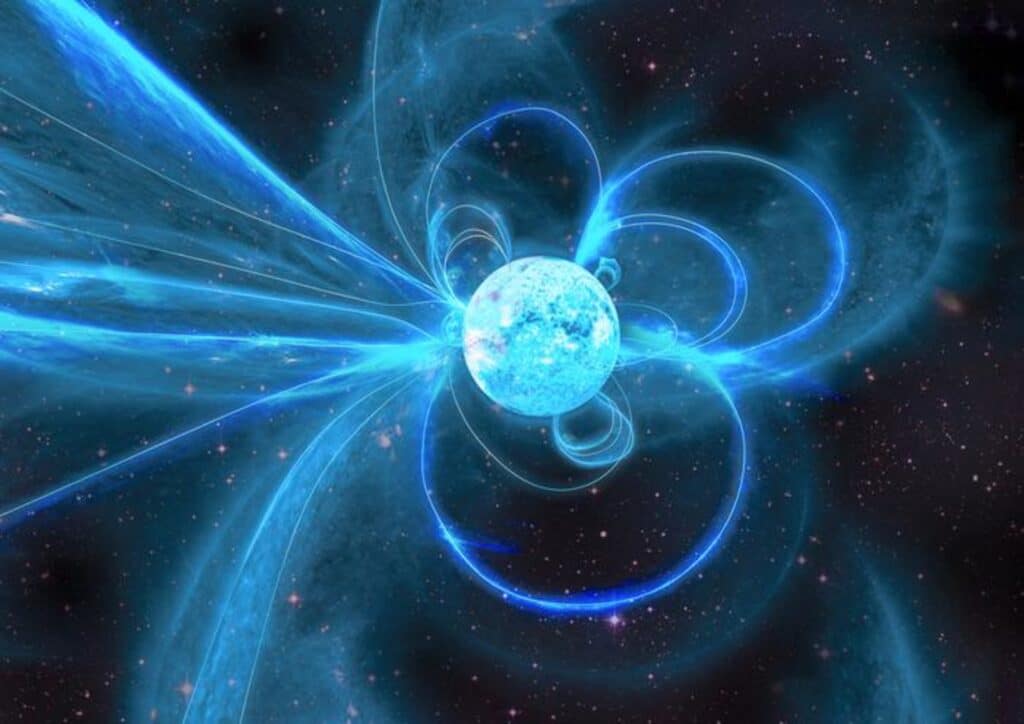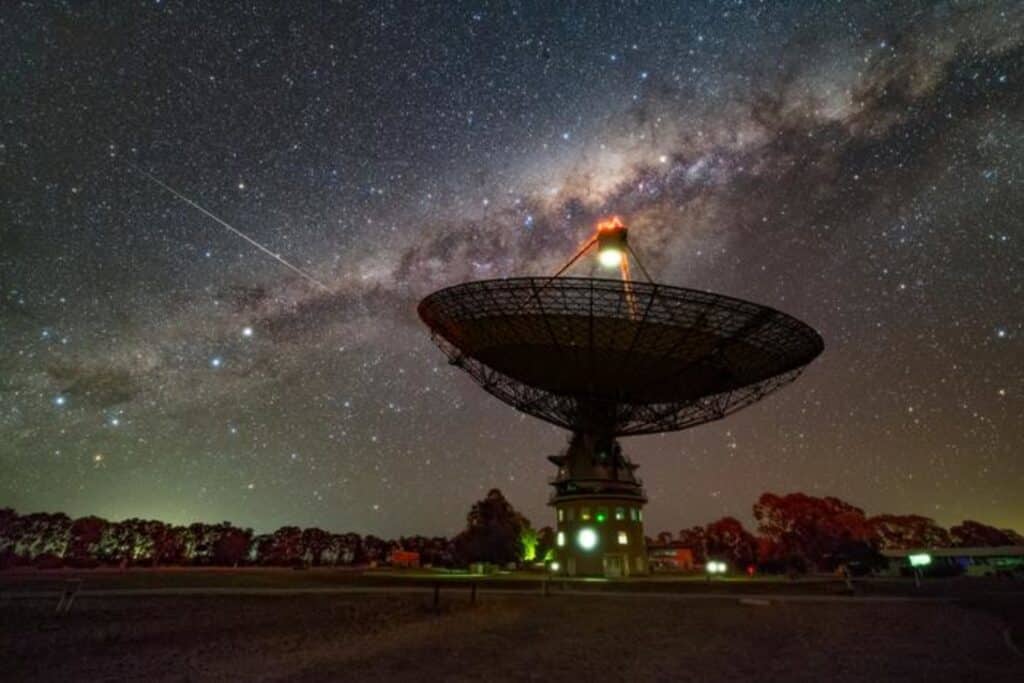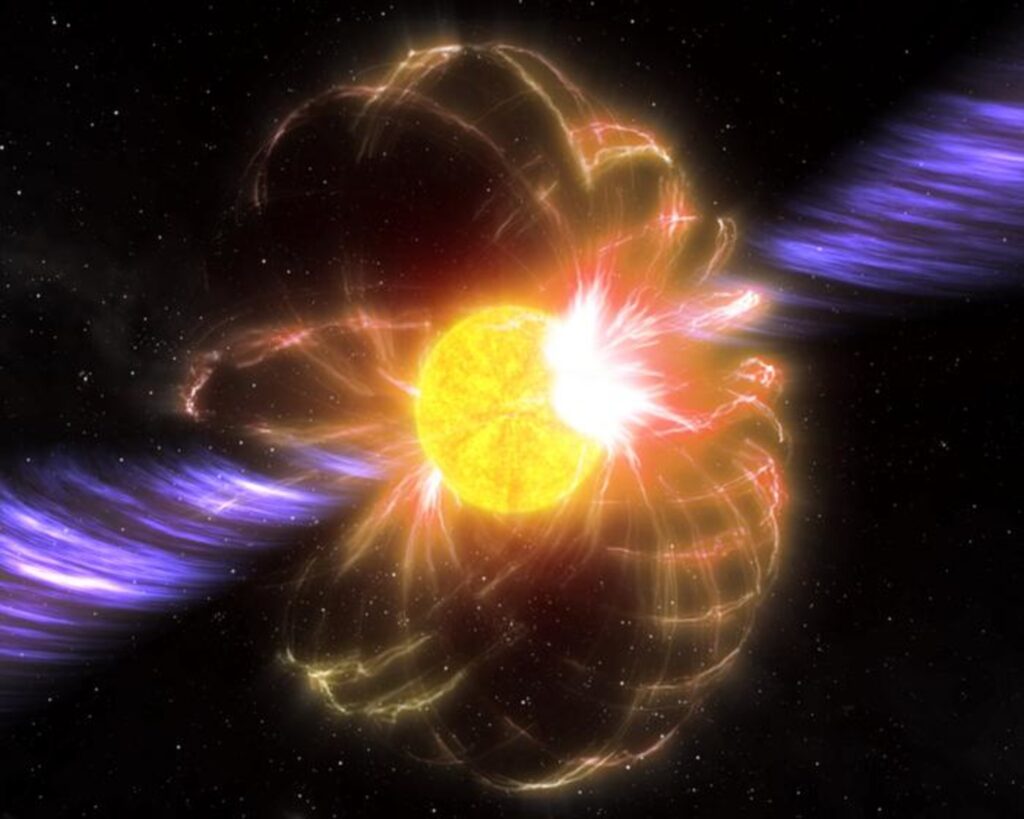There are few celestial objects that are as intriguing and perplexing as magnetars. These ultra-magnetic neutron stars, born from the explosive deaths of massive stars, have recently been the focus of a groundbreaking study — published in the journal Nature Astronomy — that sheds light on their mysterious behavior. Astronomers from CSIRO Australia have delved deep into the peculiar characteristics of a magnetar known as XTE J1810−197, uncovering a fascinating tale of twisted magnetic fields, polarized radio waves, and the complex interplay between the star’s surface and its surroundings.
Magnetars are no ordinary stars. They possess magnetic fields that are a staggering trillion times stronger than Earth’s, making them some of the most extreme objects in the cosmos. When these stars undergo outbursts, they release enormous amounts of energy in the form of X-rays and gamma rays, lighting up the sky like cosmic beacons.

The story of XTE J1810−197 begins with a perplexing observation. Following an outburst in 2018, the magnetar’s radio emission displayed a sudden shift in its polarization properties. Polarization, which describes the orientation and oscillation of electromagnetic waves, is a crucial tool for understanding the physical processes at play in these enigmatic objects.
As astronomers analyzed the data collected by the Parkes and Lovell telescopes, they noticed something peculiar. The linear polarization position angle (PA) of the radio waves emitted by XTE J1810−197 underwent a dramatic inversion. This meant that the orientation of the polarized waves had flipped, hinting at a profound change in the magnetar’s magnetic field structure.
But the surprises didn’t end there. Following the PA inversion, XTE J1810−197 began to exhibit clear frequency-dependent variations in its polarization properties. In other words, the way the radio waves were polarized changed depending on their wavelength. This phenomenon, known as birefringence, is a telltale sign of the waves interacting with a magnetized plasma surrounding the magnetar.
”Unlike the radio signals we’ve seen from other magnetars, this one is emitting enormous amounts of rapidly changing circular polarization. We had never seen anything like this before,” says Dr. Marcus Lower, a postdoctoral fellow at CSIRO Australia, in a media release.
To visualize this behavior, researchers created a series of plots that showcased the PA and ellipticity angle (a measure of the ratio between linear and circular polarization) across different frequencies and phases of the magnetar’s rotation. What they found was astounding. The PA and ellipticity angle distributions gradually branched out along two separate paths, forming a striking pattern that resembled the diverging branches of a tree.
At first glance, one might attribute this branching behavior to the presence of orthogonally polarized modes (OPMs) in the radio emission. OPMs are a common feature in pulsars, another type of neutron star, where the radio waves oscillate along two perpendicular directions. However, the astronomers realized that the slow separation and recombination of the PA distributions in XTE J1810−197 were inconsistent with the near-instantaneous transitions expected for OPMs.
To unravel the mystery, CSIRO astronomers turned to a phenomenological model that could describe the frequency-dependent polarization changes. By fitting this model to the observed data, they were able to extract key parameters that shed light on the underlying physical processes.
One of these parameters, denoted as “α,” represents the wavelength dependence of the polarization changes. Theoretical predictions for a phenomenon called Faraday conversion, which occurs when radio waves propagate through a magnetized plasma, suggest that α should have values between 1 and 3. However, astronomers consistently found values of α less than 1, indicating that the simple picture of Faraday conversion alone could not fully explain the observed behavior.
Researchers also discovered that the recovered model parameters varied significantly with the magnetar’s rotation phase and the observing epoch. This suggested that the polarization changes were strongly dependent on the line of sight, as different regions of the magnetar’s surface and surrounding environment came into view during its rotation.
To further investigate these puzzling findings, astronomers conducted simulations of radio waves propagating through a magnetized plasma. They found that the observed polarization changes could be explained by a combination of factors, including the presence of elliptically polarized natural wave modes in the plasma, variations in the magnetic field direction along the line of sight, and the possibility of multiple “Faraday screens” — regions of enhanced plasma density that can significantly alter the polarization of the passing radio waves.
“Our results suggest there is a superheated plasma above the magnetar’s magnetic pole, which is acting like a polarizing filter,” explains Dr. Lower. “How exactly the plasma is doing this is still to be determined.”

The study also highlighted the potential link between the polarization behavior of XTE J1810−197 and that of another enigmatic class of objects: fast radio bursts (FRBs). FRBs are brief, intense flashes of radio emission that have been detected from distant galaxies. Some theories suggest that magnetars could be the source of these mysterious bursts. The similarity in the polarization properties of XTE J1810−197 and some repeating FRBs raises intriguing questions about their connection and the role of magnetized plasmas in shaping their emission.
As astronomers continue to probe the secrets of magnetars and their polarization properties, studies like this one provide valuable insights into the extreme physical conditions that prevail in these cosmic powerhouses. By unraveling the complex interplay between the magnetar’s surface, its magnetosphere, and the surrounding plasma, we inch closer to understanding the fundamental processes that drive these remarkable objects and their role in the tapestry of the universe.












